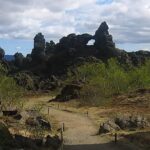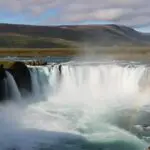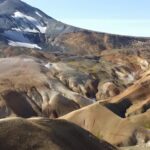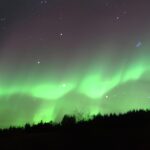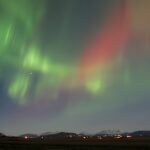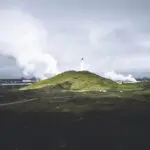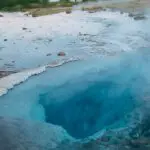Iceland and the Faroe Islands share more than just the North Atlantic Ocean. The countries have a deep-rooted connection developed over centuries of shared history, culture, and societal evolution. From the early Norse settlers and the adoption of Christianity to modern tourism and economic collaborations, these two islands share a tale of friendship and resilience. So, grab a cup of coffee and join us. Let’s explore the history, cultural exchanges, and future of Iceland and the Faroe Islands.
Shared History and Settlement
Norsemen settled both regions in the 9th century, with legends hinting at earlier Celtic monks. Landnámabók records Iceland’s early settlers, like Naddodd Asvaldsson and Ingólfur Arnarson. The Færeyinga Saga notes that Grímur Kamban settled the Faroe Islands. Norse and Celtic interactions shaped both cultures. Figures like Aud the Deep-Minded created prominent lineages through voyages from the Hebrides.
Trade and resources were crucial, sparking migrations and voyages across the North Atlantic. This activity made the region economically vibrant during the Saga Age. Icelanders and Faroese had similar social structures, influenced by Norwegian rule. The Faroese parliament was established at Tinganes in 825, and the Icelandic parliament at Thingvellir in 930.
The Spread of Christianity
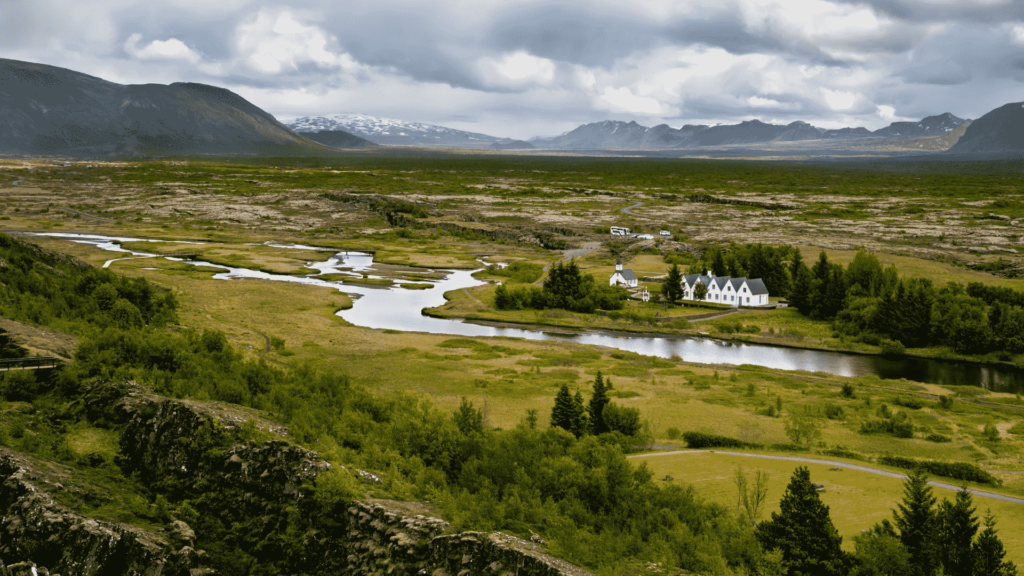
Around 1000, Christianity replaced paganism in both regions. During Iceland’s Age of the Sturlungs, from the late 11th to the mid-12th century, leading families engaged in intense power struggles and feuds. Rival clans vied for control, resulting in brutal conflicts and shifting alliances, characterising these turbulent times.
The most prominent families, like the Sturlungs, sought dominance through strategic marriages, political manoeuvres, and, often, outright violence. This period also saw the involvement of the Norwegian crown, which tried to exert influence over Iceland’s chieftains. The internal strife ultimately weakened Iceland’s independent governance, paving the way for Norwegian annexation in the 13th century. Despite the chaos, the Age of the Sturlungs produced significant literary works, including some sagas that chronicle these events.
Faroe Islands Conflicts

At the same time, the Faroe Islands faced conflicts, especially between the pagan leader Tróndur í Gøtu and the Christian convert Sigmundur Brestisson. Tróndur, a staunch defender of Norse gods and traditional Faroese ways, clashed with Sigmundur, who had converted to Christianity in Norway and now strongly supported the new faith.
Supported by the Norwegian crown, Sigmundur aimed to impose Christianity on the islands, part of Norway’s plan to extend its influence. This clash was both a religious dispute and a power struggle, as adopting Christianity meant aligning with the Norwegian king. The tension led to several violent encounters, with Sigmundur ultimately being captured and killed by Tróndur’s forces.
Norwegian rule began formally in Iceland with the Old Covenant in 1262 and in the Faroe Islands after Tróndur died in 1035. Both regions adapted to changes under the Kalmar Union (1380) and later Danish absolute rule (1662). Iceland gained sovereignty in 1918 and severed ties with Denmark in 1944. The Faroe Islands achieved home rule in 1948.
19th and 20th Century Developments
The 19th century significantly changed Icelandic and Faroese societies, marked by increased educational exchanges and cultural development. Many Icelanders and Faroese went to Copenhagen to study, which fostered meaningful interactions between the two groups. At this time, the Faroese language lacked a written form.
Jón Sigurðsson, Iceland’s independence hero, was instrumental in addressing this gap. He collaborated with Venceslaus Ulricus Hammershaimb, now regarded as the father of the Faroese written language. Together, in 1845, they established a society in Copenhagen dedicated to reviving and promoting the Faroese language. Their efforts advanced the linguistic and cultural identity of the Faroese people and forged a lifelong friendship between the two men.
Who was Jón Sigurðsson?

Jón Sigurðsson (1811-1879) was pivotal in Icelandic history. He was renowned for his leadership in the country’s struggle for independence from Danish rule. Born in the Westfjords of Iceland, he moved to Copenhagen for his education, where he became deeply involved in his time’s political and cultural movements.
As a historian, philologist, and politician, Jón passionately advocated preserving and promoting Icelandic culture and language. He edited and published numerous historical documents that underscored Iceland’s rich heritage. His efforts culminated in the founding of the Icelandic National Movement, which sought to restore the Alþingi (Icelandic Parliament) and gain increased autonomy for Iceland.
Known for his eloquence and dedication, Jón’s leadership was instrumental in Iceland’s achieving home rule in 1874. His legacy endures, with Icelanders celebrating his birthday, 17 June, as their National Day.
Icelandic national consciousness grew in the mid-19th century, led by figures like Jón Sigurðsson. This led to a constitution in 1874, home rule in 1904, and full sovereignty in 1918. The republic was established in 1944. The Faroese Society was founded in 1888. It initially focused on preserving the Faroese language, which became official in 1937, and later on political matters. Key leaders like Jóhannes Patursson and Rasmus Christoffer Effersøe, who had Icelandic ancestry, fought for Faroese self-government modelled after Iceland. This was approved in 1938 but fully implemented in 1948.
Modern Cooperation Between Iceland and the Faroe Islands
In the latter part of the 20th century and into the 21st, Icelanders and Faroese have collaborated on fishing quotas, sports, and various agreements. Icelandic contractors have tackled construction projects in the Faroe Islands while enterprising Faroese have set up businesses in Iceland. The two nations have teamed up in maritime freight (Eimskip, Faroe Ship, Samskip, Smyril Line), air travel (Atlantic Airways, Icelandair), telecommunications, banking, insurance, and fuel sales (Skeljungur, Magn).

The 2005 Hoyvík Agreement was a game-changer, ramping up cooperation across healthcare, culture, and sports. Thanks to this agreement, Iceland opened a consulate in Tórshavn, and the Faroe Islands set up a representation office in Reykjavik, making it easier for them to work together. Even fifteen Icelandic municipalities have sister city partnerships with Faroese towns, like Reykjavik and Tórshavn, and Kópavogur and Klaksvík. This partnership is more than just business—it’s about building strong, lasting relationships between these close-knit communities.
What does the name Faroe mean?

The Faroe Islands are called Føroyar in modern Faroese. “Oyar” is the plural form of an older word for an island (now “oyggj” in Faroese), and “før” likely comes from the Old Norse word for livestock. Norwegian archaeologist Anton Wilhelm Brøgger suggested that the name might originate from the Celtic word “fereann,” meaning “land” or “kingdom,” but he acknowledged this theory is speculative.
In the 825 book “Liber de Mensura Orbis Terrae,” the Irish monk Dicuilus describes islands about two days’ sail north of the British Isles, rich in seabirds and sheep, but does not name them. The Hereford Mappa Mundi from 1280 documents the oldest use of the name, labelling the islands as “farei.” The Færeyinga Saga, written in the 13th century, survives only in fragments within the Saga of Olaf manuscripts and does not include any accounts of the name’s origin.
What is the origin of Iceland?
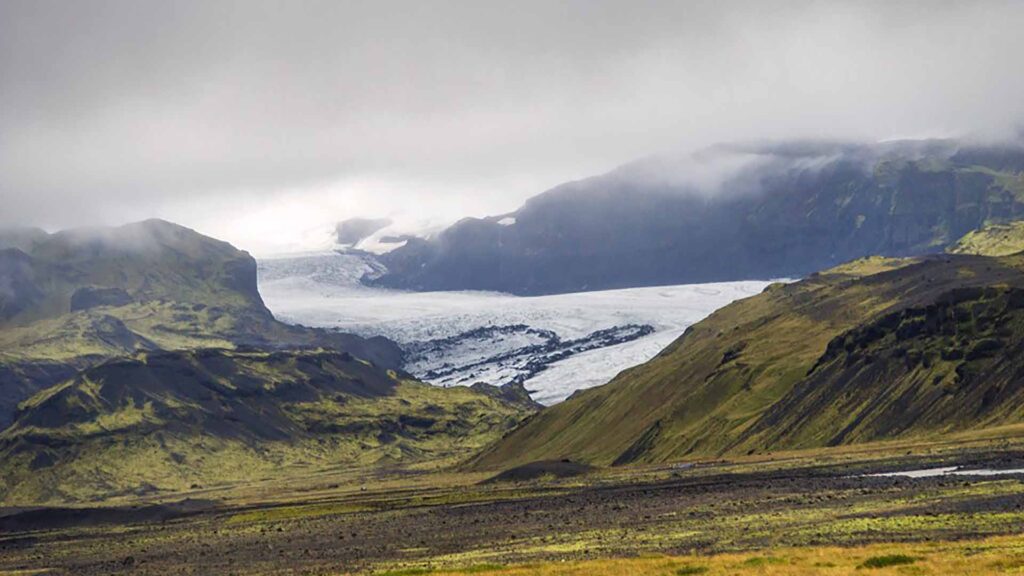
The name “Iceland” originates from the Old Norse word “Ísland,” which translates to “land of ice.” Early Norse explorers who discovered and settled the island in the late 9th century named it. According to historical accounts, the first settler, Naddodd, initially named the island “Snæland” (Snow Land) due to the extensive snow he observed. However, the name that endured came from another early settler, Flóki Vilgerðarson.
After experiencing a harsh winter and seeing a fjord filled with drift ice, Flóki named the island “Ísland”. This name was documented in the medieval Icelandic manuscript Landnámabók (The Book of Settlements), which chronicles the early settlement of Iceland.
The name “Iceland” is derived from the Old Norse words “ís,” meaning “ice,” and “land,” meaning “land” or “country.” Despite the island’s relatively mild climate due to the North Atlantic Drift, the early settlers’ first impressions were dominated by the cold and ice they encountered. The island’s volcanic activity, glaciers, and frequent ice formations in coastal waters likely influenced this perception.
Strengthening Tourism Ties Between Iceland and the Faroe Islands
Since 1995, Iceland and the Faroe Islands have been teaming up to boost tourism, initially under FITUR. Greenland soon joined in, and by 2007, all three were working together through NATA (North Atlantic Tourism Association).
NATA is all about improving tourism. It shares vital information like tax and fee details, promotes the West Nordic region as a must-visit destination, and collaborates on environmental certification, conservation, training, and quality control. It also runs joint marketing campaigns and funds various projects.
Vestnorden Travel Trade Fair
One highlight is the Vestnorden (West Nordic) travel trade fair, held every two years. This fair, which started in 1986, rotates between Iceland, the Faroe Islands, and Greenland. Besides, NATA gives grants to tourism businesses and supports cultural and sports exchanges with an annual budget of around 40 million ISK (2 million DKK).

